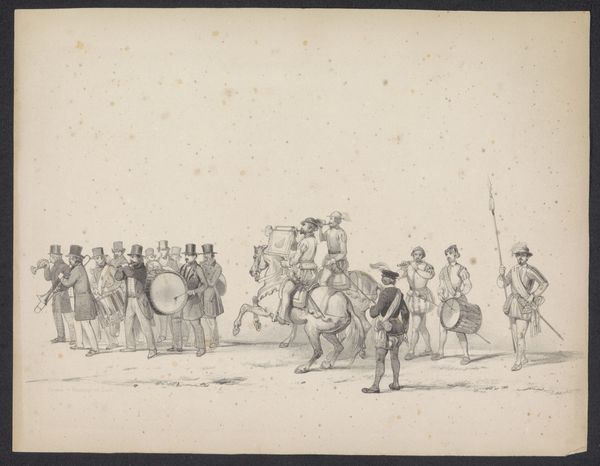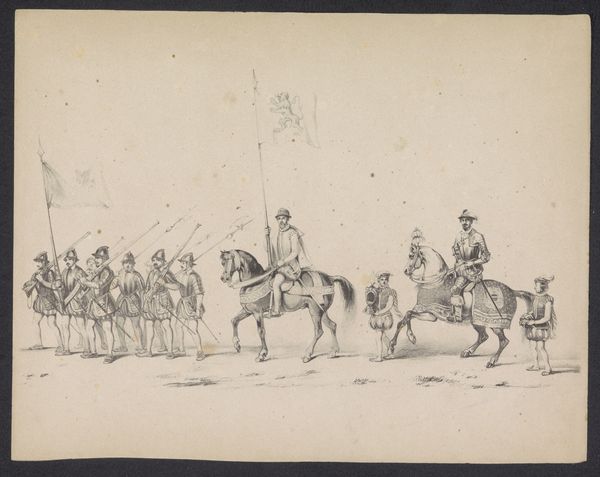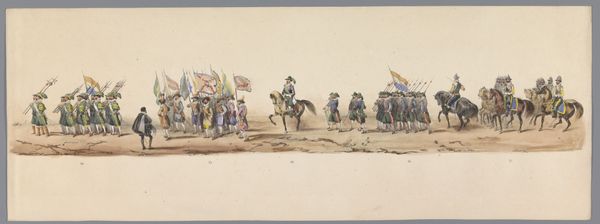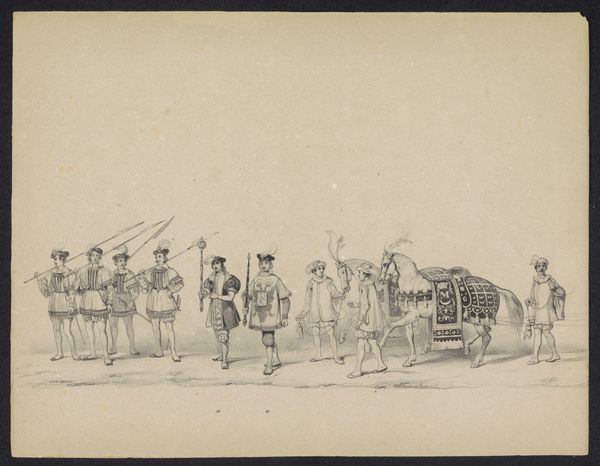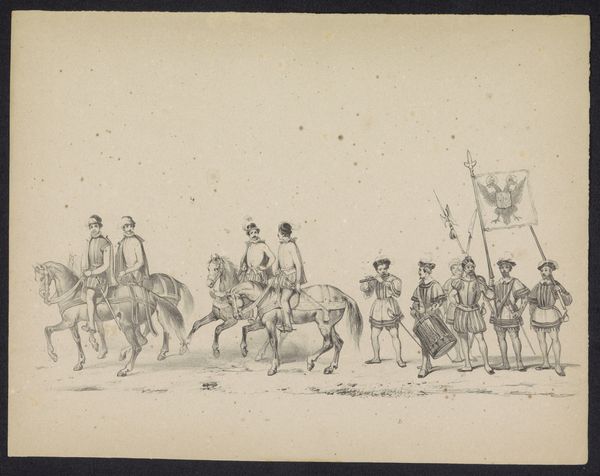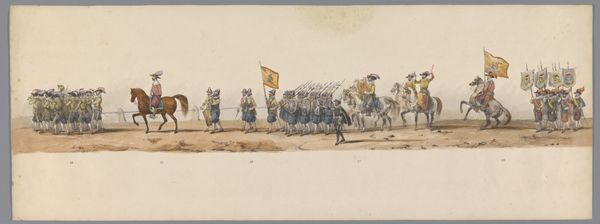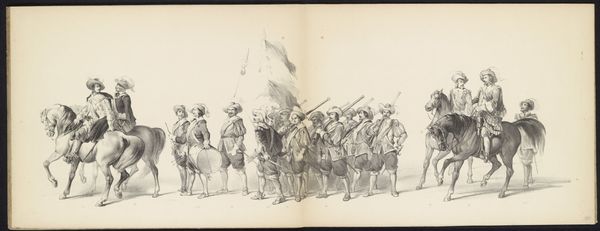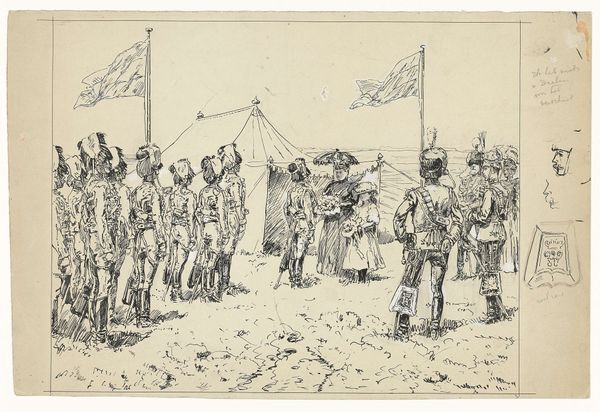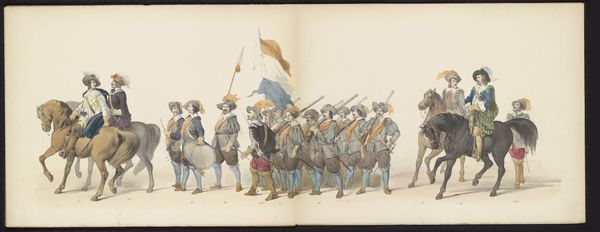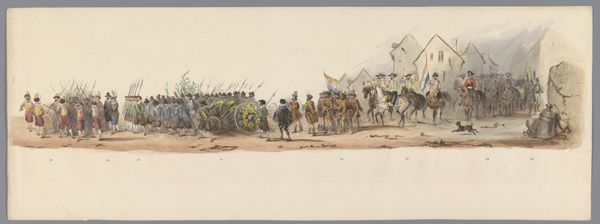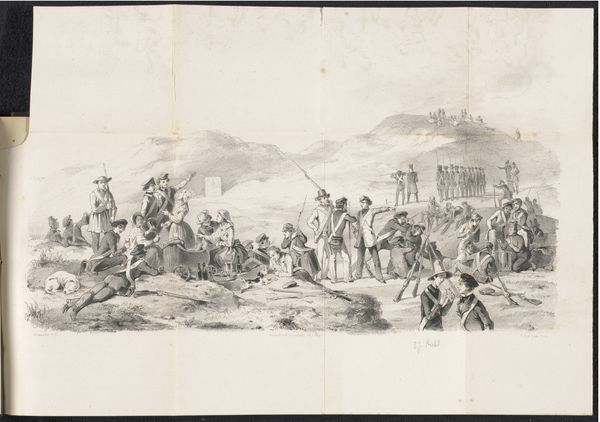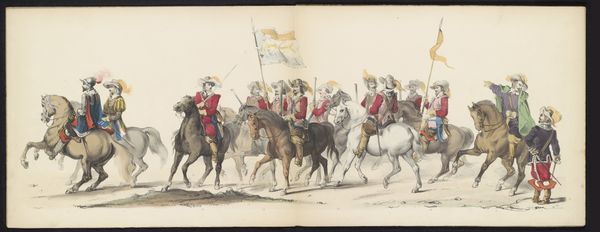
Maskerade van de Utrechtse studenten, 1846 (plaat 22) 1847
0:00
0:00
drawing, print, ink, pen
#
drawing
#
ink drawing
# print
#
pen illustration
#
ink
#
romanticism
#
pen
#
genre-painting
#
history-painting
Dimensions: height 240 mm, width 310 mm
Copyright: Rijks Museum: Open Domain
Editor: So this is "Maskerade van de Utrechtse studenten, 1846," by Carel Christiaan Antony Last, created around 1847, currently at the Rijksmuseum. It’s an ink drawing, almost like a detailed illustration. It looks like two separate groups in period costume marching in formation. How do you see this artwork in terms of its visual construction? Curator: Intriguing. From a formalist perspective, I am immediately drawn to the pronounced contrast between the two distinct groups. Consider the pen work. The application of ink defines the costumes. The lines appear rather rigid. Notice the deliberate arrangement of the figures. Each stands at attention to produce a predictable formation. Observe also, if you will, the subtle difference in attire separating each company and their precise placement, forming distinct, visual masses. What is the impact of this binary arrangement, do you suppose? Editor: I guess the composition draws attention to how Last divided these people based on visual and social cues, perhaps contrasting different roles or status through costume. Curator: Precisely. Consider the interplay between light and shadow achieved solely through hatching and cross-hatching. The uniformity within each group, enhanced by repeated forms, also prompts an assessment of variety across the whole. The piece’s structure then reinforces its central binary contrast, achieved through line and compositional organization. It evokes a dynamic of both harmony and counterpoint. Are we witnessing here, therefore, more than simply the rendering of two disparate groups? Editor: I think seeing how the artist plays with form and composition helps understand the different intentions of these contrasting groups, moving beyond their surface-level appearance. Curator: Exactly. The artist achieves a structured analysis through careful visual arrangement of its constitutive elements. A semiotic approach, where each symbol – costume, weapon, stance – creates an intriguing dialog on societal codes, in this masquerade. Editor: I've certainly gained a new viewpoint in understanding visual symbolism today!
Comments
No comments
Be the first to comment and join the conversation on the ultimate creative platform.
